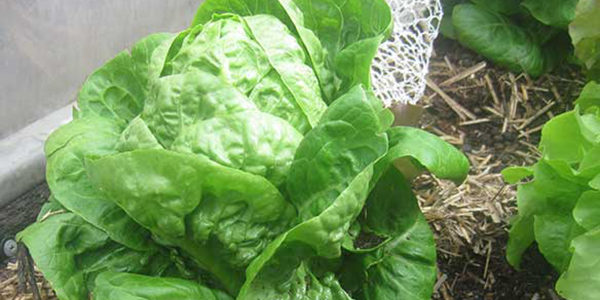While the easiest way to produce seedlings is to grow them in a styrofoam box or similar large box seedlings that do not like having their roots disturbed do better when grown in single cell seedling trays (sometimes called plug trays). This page explains how best to use these trays.
A single cell seedling tray is a tray with a series of cells (also known as plugs) designed to hold a single seedling in each cell.
Single cell seedling trays are ideal for growing seedlings that do not transplant easily, examples of such seedlings include, corn, pumpkin, zucchini and cucumber. They do not transplant easily as they respond poorly to having their roots disturbed. As the root structures of the seedlings in a plug tray are separated from other seedlings they encounter less root disturbance when transplanted than seedlings grown in multi seedling punnets or seedling boxes.
Single cell seedling trays are also useful for growing seedlings that require warm soil to germinate and grow as they can be artificially heated using a seedling heat mat or an AQUARIUM HEATER SEEDLING PROPAGATION BOX, whereas styrofoam seedling boxes cannot be artificially heated. Seedlings requiring warm soil to germinate and grow include eggplant, capsicum, chilli and tomato.
Single cell seedling tray cells vary in size, both in the size of the actual tray and the size and number of cells each tray has. Larger cells allow seedlings to grow larger and can be held for longer than smaller ones.
While there is a huge range of single cell seedling trays on the market there are five single cell trays and punnets that I use or have used in the past and are commonly available at hardware stores and nurseries.
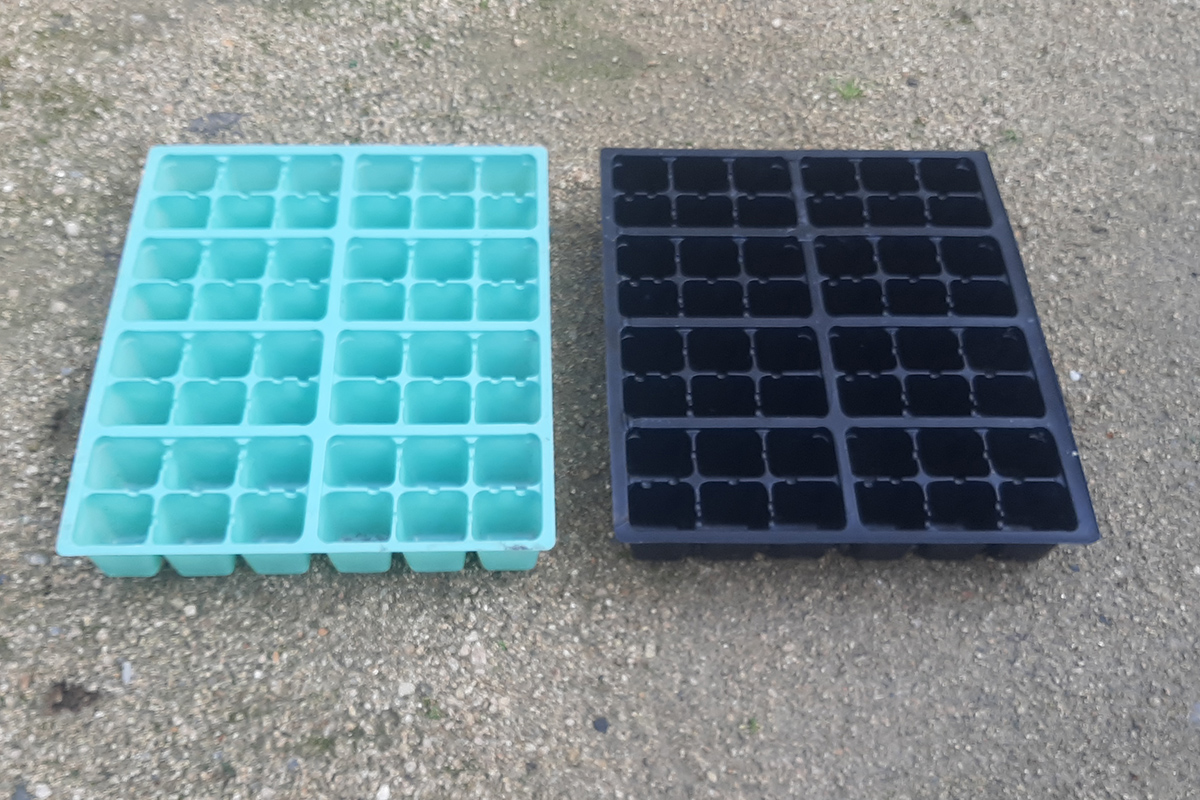
LEFT: The 48 cell seedling tray that comes with the Yates mini greenhouse, which retails for around $39 (2024 prices, AUD) and is available at many hardware stores and nurseries. RIGHT: 48 plug seedling trays are also sold separately, but they are only available from online gardening supply outlets.
REVIEW: While I have used these 48 single cell seedling trays in the past the small size of the cell holes means you have to be extremely vigilant about watering them as their small size means they can dry out more easily than cell trays with larger plug holes. They fit into the standard 350mm x 295mm seedling trays, using these trays offers better support and makes the cell tray easier to carry.
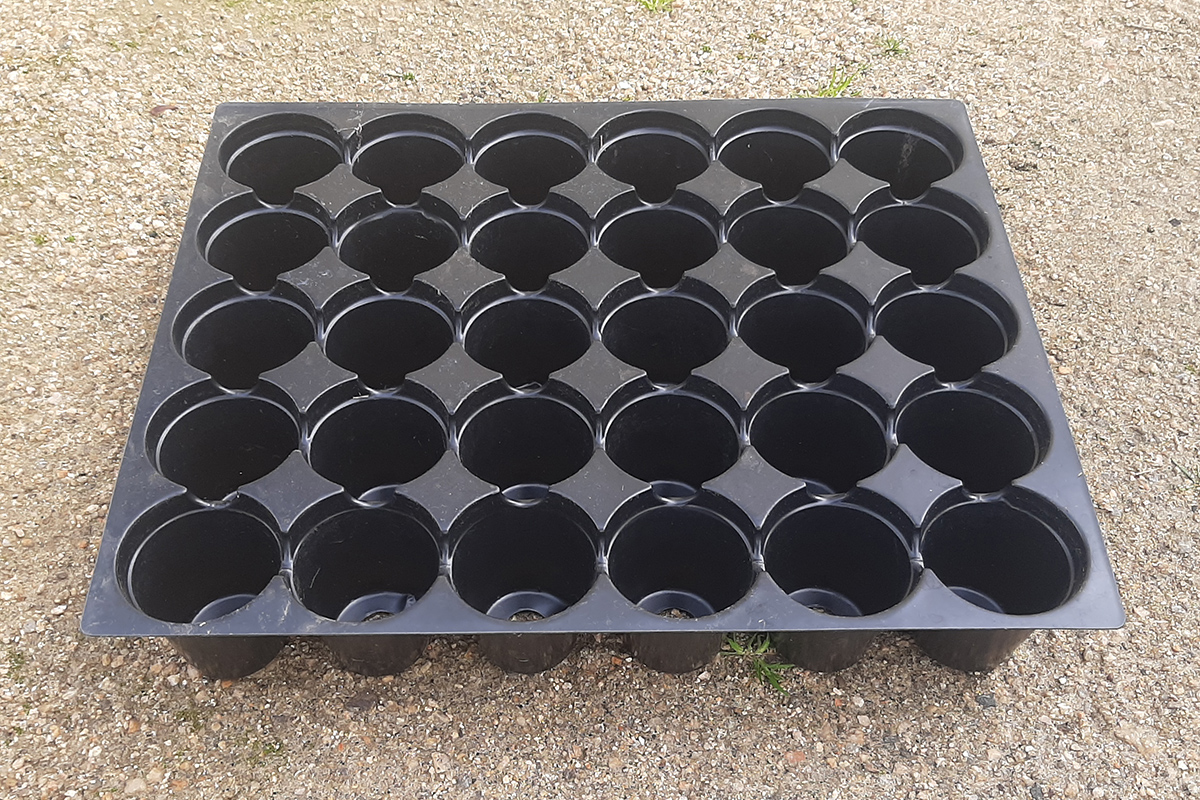
The Reko 30 cell seedling tray has fewer plug holes than either the Yates 48 or the Saxon 24 cell seedling trays but the individual plug holes hold more seed raising mix. Like the Yates 48 cell tray this Reko tray fits into a standard 350mm x 295mm seedling tray.
REVIEW: I have found the size of these individual cell holes to be ideal for growing a range different seedlings, big enough so that the pugs don’t dry out too quickly but small enough so that I can grow a reasonable amount of seedings per tray. The trays are made in Australia from what appears to be a higher quality plastic as they last longer than either the Yates 48 or the Saxon 24 cell trays.
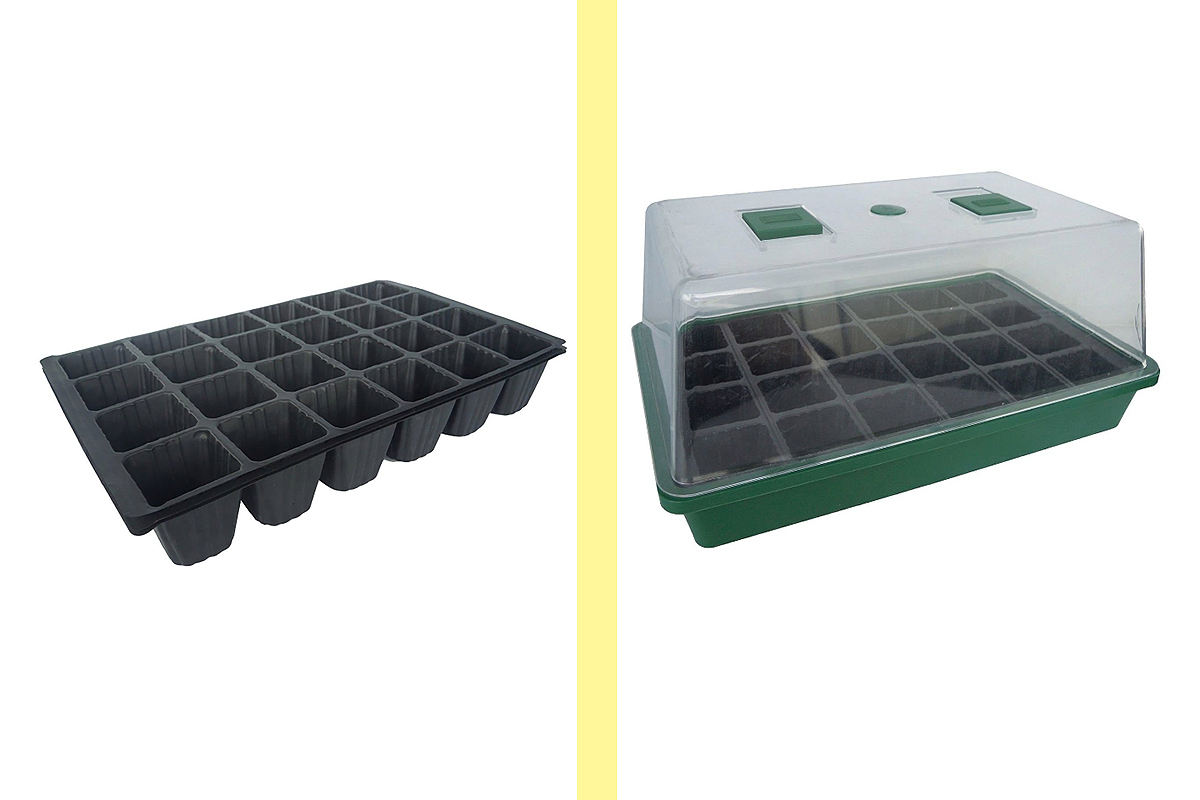
These Saxon cell seedling trays are smaller in overall size but each individual cell holds a similar amount of seed raising mix to the Reko 30 cell seedling tray. They are designed to go with the Saxon Mini Green House.
REVIEW: Ideal for gardeners who only want to grow a small number of seedlings. But they do not fit a standard 350mm x 295mm seedling tray, which my aquarium heater propagation boxes are designed to take, as such I no longer use these trays. I also found that they tended to become brittle and break after only a relatively short time. The Saxon mini greenhouse they are designed to fit into is also quite good for small scale seedling production.
While these six cell seed raising punnets are small six of them fit into a standard 350mm x 295mm seedling tray, making a total of 30 plug holes per tray, the same number (and approximate size per cell hole) as the Reko 30 plug seedling tray.
REVIEW: While I have only being using these cell seedling punnets for a short while (as of January 2024) they have already become my favourite single cell receptacle for growing seedlings. Being separate punnets they are more versatile than a cell seedling tray and as they are made of silicon and not plastic they should last much longer. Because the silicon is so soft and pliable they are the easiest of all my cell seedling receptacles to remove the seedlings from when they have matured. The one negative is that, at $12.95 for just two six cell punnets (2024 prices AUD), they are more expensive than plastic cell seedling trays, thought their expected long lifespan should make them better value for money in the long run.
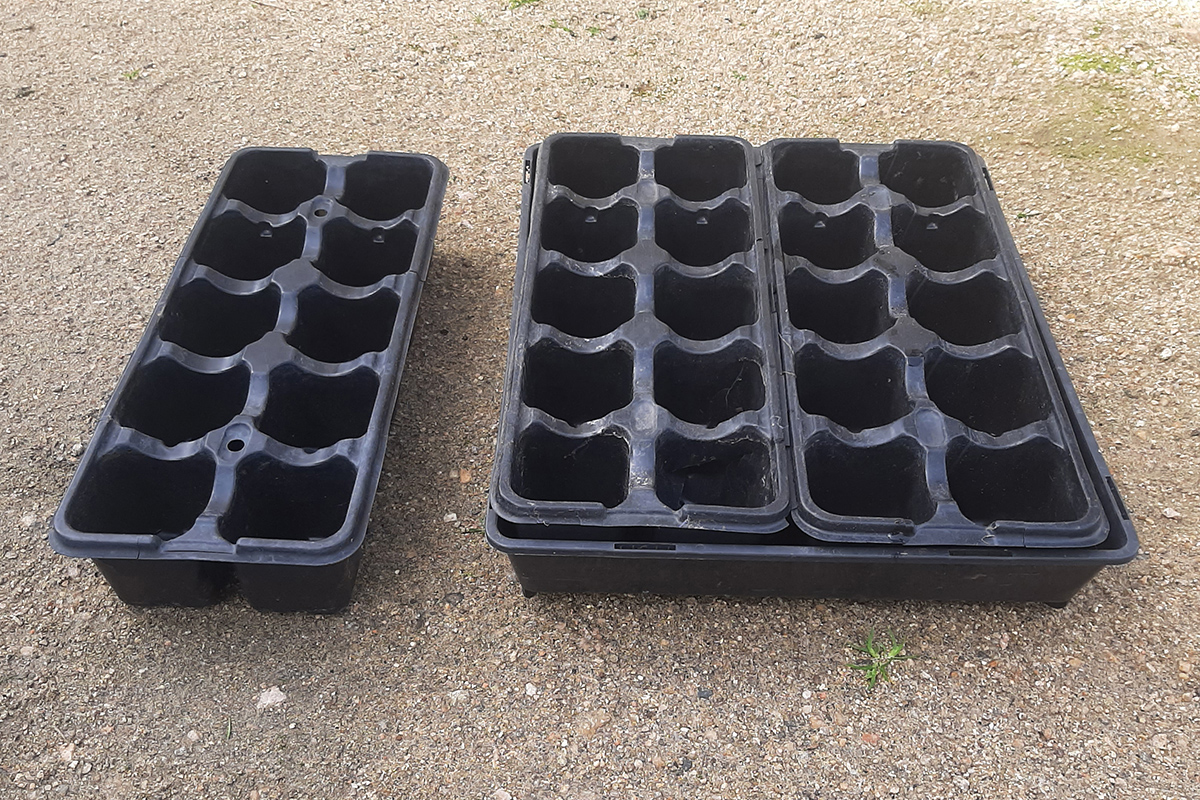
The Reko 10 cell holds more seed raising mix than all of the above cell trays and punnets. Two of the trays fit snuggly into a standard 350mm x 295mm seedling tray.
REVIEW: I regularly use these punnets to grow herbs and seedlings that I do not want to pot up to larger pots as it allows the seedling to grow quite large before needing to be transplanted. Their main drawback is that they take up more space per seedling, which can be an issue where space is a premium in a small greenhouse or when using heat mats to artificially heat seedlings.
While the above mentioned single cell seedling trays can be used as standalone trays it is better to place them in a standard 350mm x 295mm seedling tray as this gives better support.
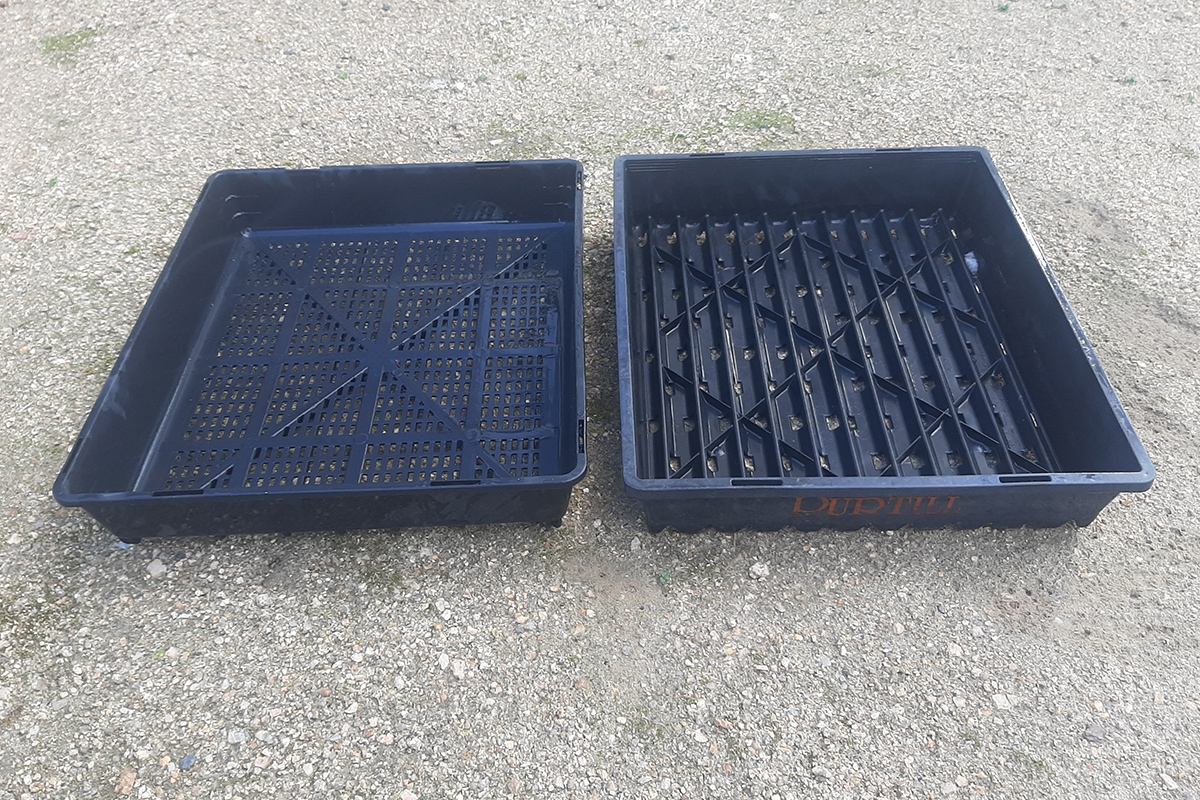
LEFT: 350mm x 295mm restricted drainage seedling tray. RIGHT: 350mm x 295mm Seedling tray with bottom ridges which are designed to allow better drainage.
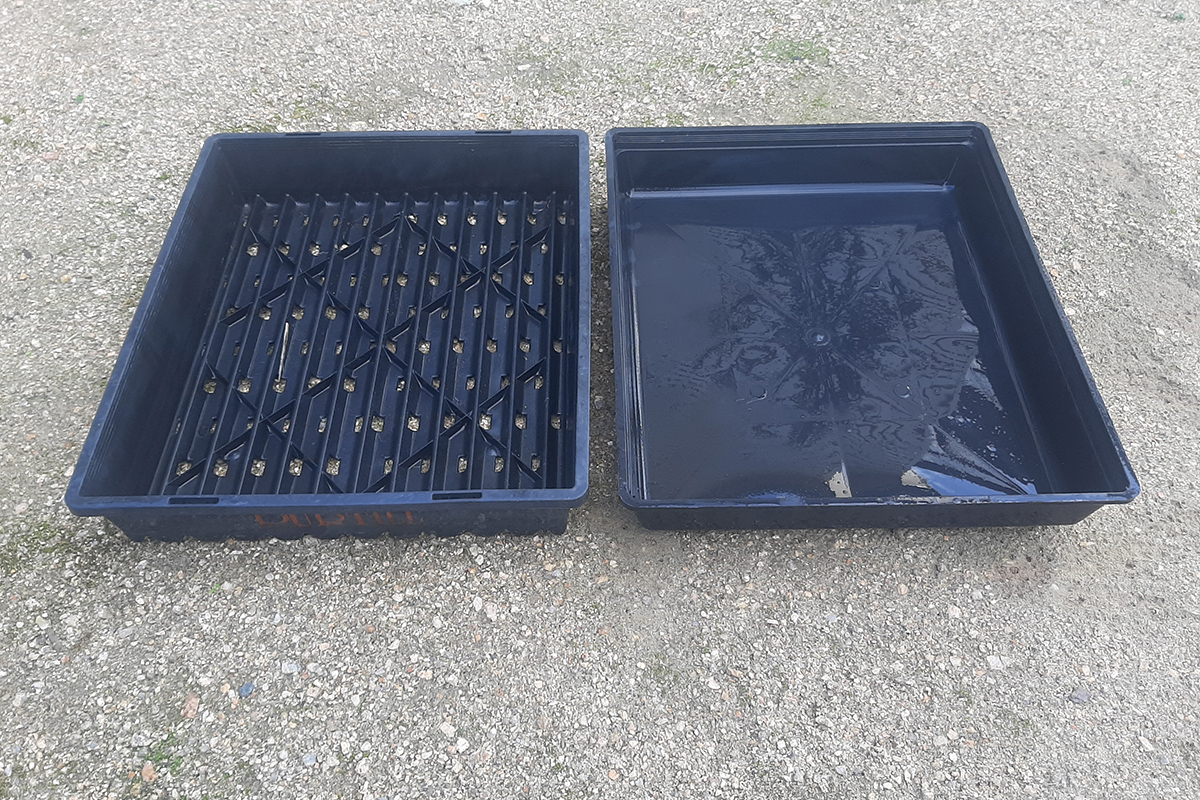
LEFT: 350mm x 295mm seedling tray with bottom ridges. RIGHT: 350mm x 295mm watertight seedling drip tray.
I use seedling trays with bottom ridges in watertight drip trays when the seedlings are approaching maturity and their demand for water is higher. The Drip tray allows for a reserve of water to sit under the seedlings while the raised bottom ridges of the seedling tray help keep the base of the seedlings above the watermark, thereby reducing the risk of waterlogging.
As the seed raising mixture that each seedling is grown in is small in volume seedlings grown in single cell seedling trays are more prone to drying out and are at greater risk of the growing seedlings exhausting the available nutrients. As a result, seedlings grown in single cell seedling trays require more frequent watering and regular applications of diluted liquid fertiliser if they are to thrive.
As seeds contain all the energy they require to sustain life in the first few days of growth there is no need to add liquid fertiliser until they reach the dicot (two leaf stage), in fact applying too much fertiliser can burn or even kill germinating seeds.
As newly emerged seedlings are small they only need a small amount of water. But as they get bigger they will need more water and regular applications of half strength diluted liquid fertiliser as their nutrient requirements increase. When the seedlings are approaching maturity they will need full strength diluted liquid fertiliser to meet their ever-increasing nutritional demands. Though at any stage of the seedlings’ growth it is important not to overwater them. Overwatering single cell seedling trays runs the risk of leaching the nutrients out of the soil, especially when applying water that does not have any liquid fertiliser added to it. Seedlings grown in soil with the nutrients leached out of it are likely to be sickly and stunted.
Another option to avoid leaching is to use a watertight drip tray under the plug seedling tray, this will also conserve water.
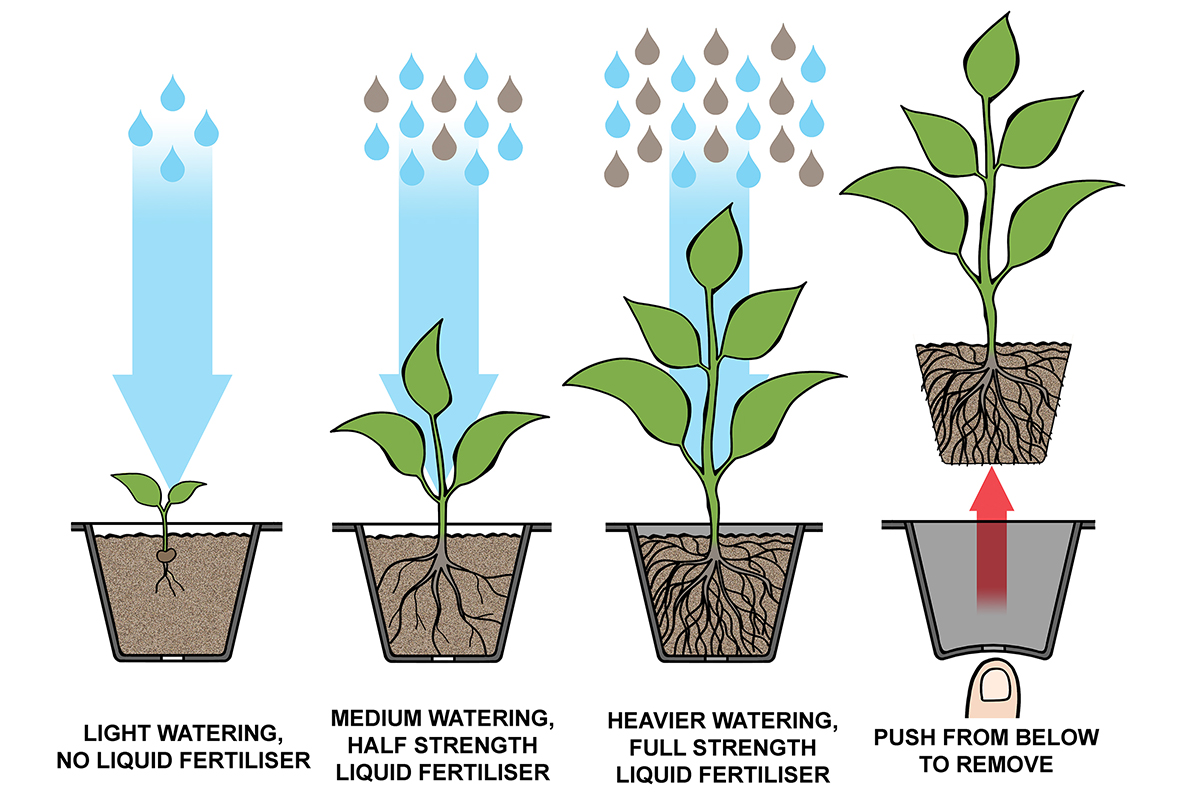
Seedlings grow better when fed with liquid fertiliser, but it is important not to give them too much fertiliser as this can burn or even kill the germinating seeds. Water with clean water until the emerging seeds have reached the dicot (two leaf stage) then apply a half strength diluted liquid fertiliser until they are three quarters grown, followed with full strength diluted liquid fertiliser until they are ready to be transplanted. Apply only enough water/liquid fertilser to keep the soil damp.
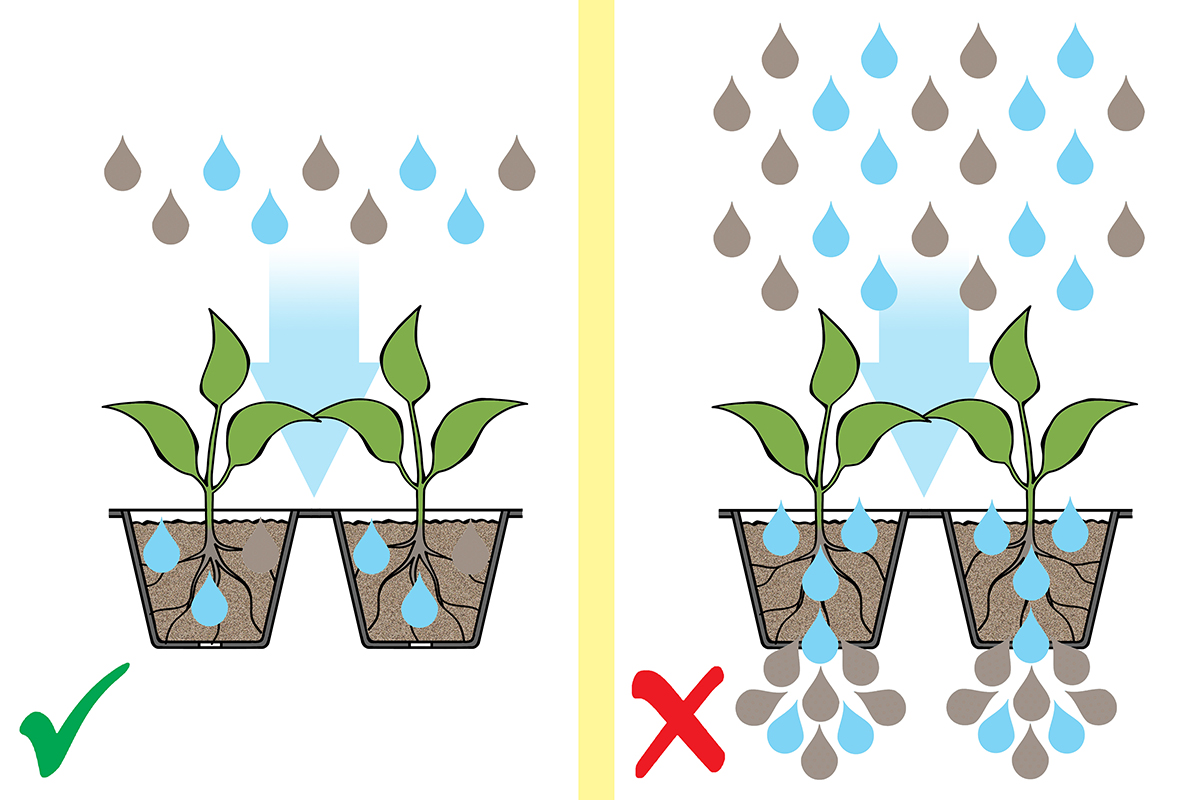
Overwatering single cell seedling trays runs the risk of leaching the nutrients out of the soil, especially if you use water that does not have any liquid fertiliser added to it.
Seedlings grown in single cell seedling trays need to have grown large enough to have become rootbound before being transplanted. Removing seedlings when still small runs the risk of them not coming out of their cells cleanly, which will likely damage their roots.
To remove a seedling use your finger to depress the flexible bottom of the seedling tray while at the same time gently pulling the seedling from the top.
Once planted in the ground water the roots and the leaves with a diluted liquid fertiliser. The leaves are watered as well as they can also absorb nutrients.
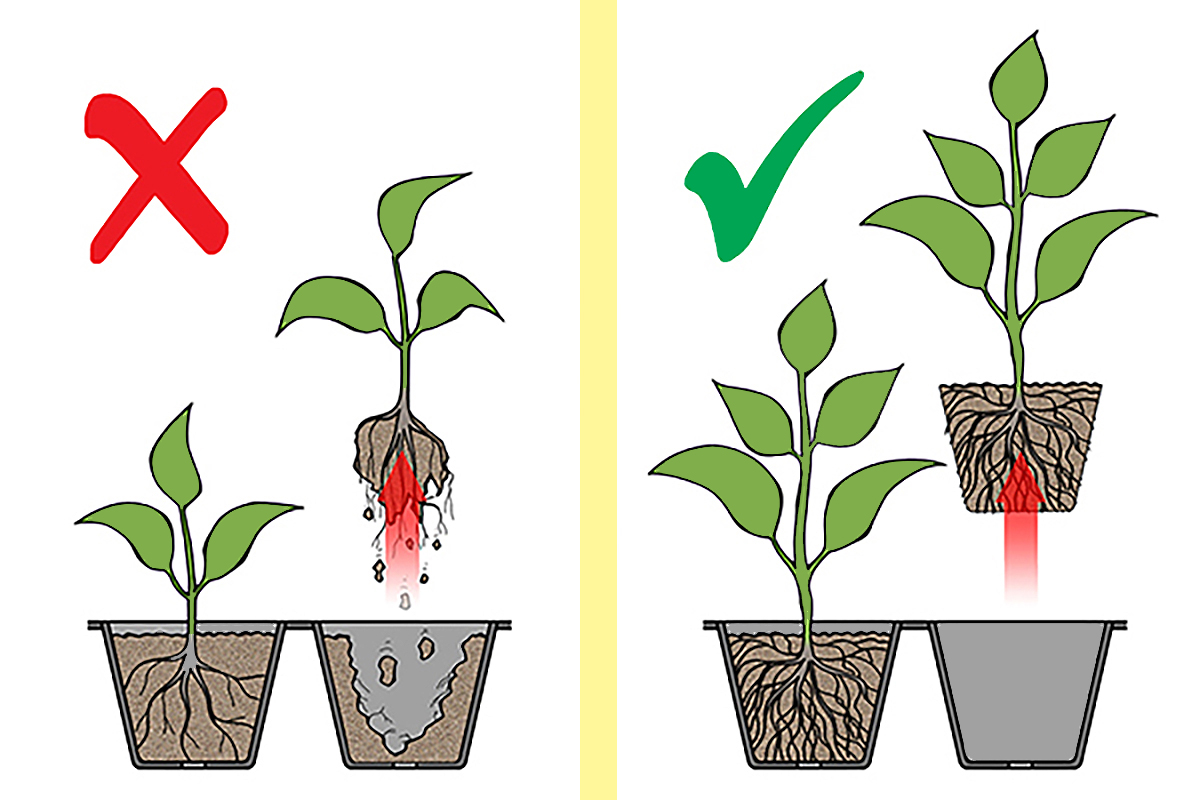
Seedlings grown in plug seedling trays need to have grown big enough to have become rootbound before being transplanted. Removing the seedlings when still small runs the risk of them not coming out of their cells cleanly, which will likely damage their roots.
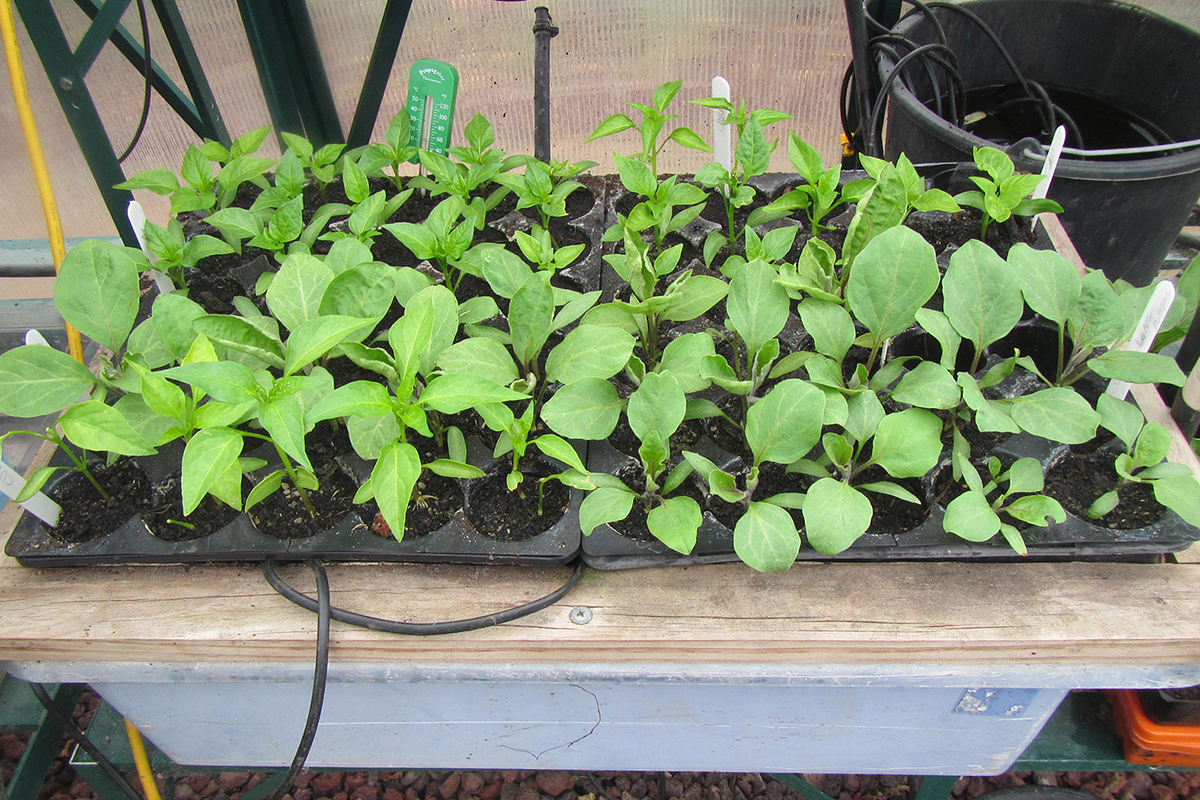
A big advantage of growing seedlings in single cell seedling trays is that they can be artificially heated. These capsicum and eggplant seedlings are being grown in an aquarium heater seedling propagation box, for more information see: How To Make An Aquarium Heater Seedling Propagation Box.
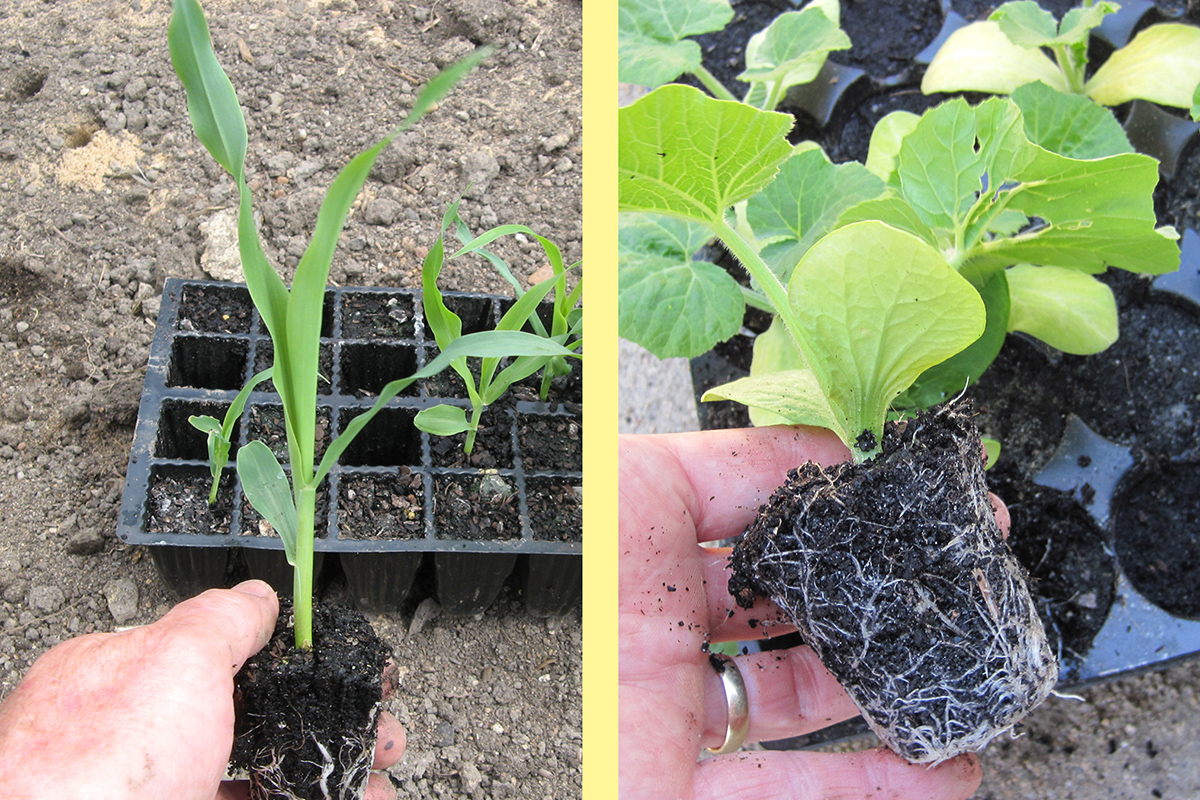
Corn and pumpkin seedlings grown in single cell seedling trays. Corn and pumpkin seedlings do not transplant well when their roots are disturbed. For a list of seedlings that do not transplant well when their roots are disturbed see the Seedling Planting Suitability Chart.
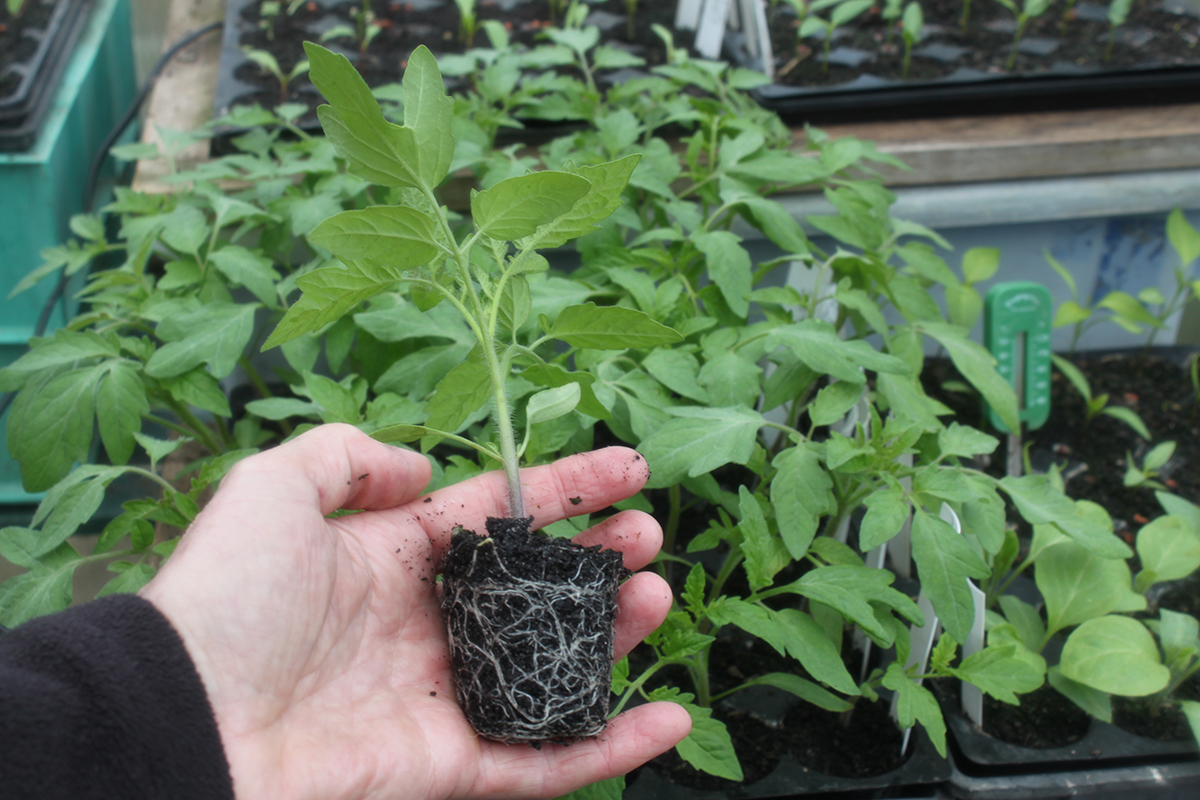
Even seedlings of vegetables that do transplant easily, such as tomato plants, will transplant more easily when grown in plug seedling trays.
Most of my seedlings grown in single cell seedling trays are potted up into larger pots before planting them in the ground.

LEFT: Tomato seedlings that have been potted up into 14 cm pots. RIGHT: Capsicum seedlings in 10 cm square pots. The potted up seedlings are kept in my greenhouse to allow them to grow large before planting them in the veggie garden after the risk of a spring frost has passed. Planting large seedlings that require warm conditions to thrive increases the chance of an earlier and larger crop.
SINGLE CELL SEEDLING TRAYS ADVANTAGES SUMMARY
ADVANTAGES
- Ideal for growing seedlings that do not transplant well when their roots are disturbed.
- Can be artificially heated using a seedling heat mat or in an aquarium heater propagation box.
SINGLE CELL SEEDLING TRAYS DISADVANTAGES SUMMARY
DISADVANTAGES
- Require more frequent watering than seedlings grown in a styrofoam seedling box.
-
Need regular feeds of diluted liquid fertiliser to ensure maximum growth.




